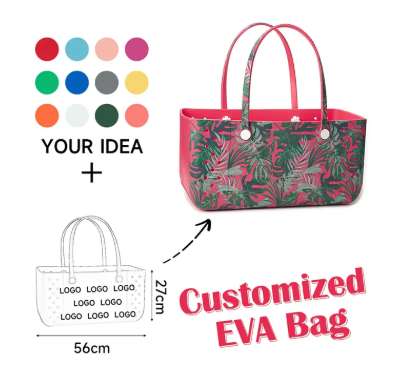Understanding EVA Material Properties for Diverse Applications
Durability and Flexibility in Consumer Goods
What makes EVA so popular among manufacturers? Well, it stands out because of how tough yet flexible it really is. Footwear makers love working with this stuff since it can take quite a beating without breaking down over time. And let's face it, nobody wants shoes falling apart after just a few wears. The real magic happens when we talk about shaping EVA into all sorts of forms. From athletic gear to kitchen tools, designers find endless ways to mold this material into practical but also cool looking products. People who buy things made with EVA tend to come back for more because they notice how well these items hold up day after day. That combination of lasting power plus the freedom to create interesting shapes keeps bringing companies back to EVA again and again despite all the other options available on the market today.
Chemical Resistance in Industrial Settings
EVA's ability to resist chemicals makes all the difference in industrial settings. The way its molecules are structured gives it remarkable protection against a wide range of substances, which explains why manufacturers trust EVA when their equipment faces constant contact with corrosive materials. This stability really matters in chemical processing plants and similar facilities where material failure can lead to serious problems down the line. Research shows EVA keeps performing well even when exposed to some pretty nasty chemicals, so workers don't have to worry about sudden breakdowns or dangerous leaks. For companies dealing with tough chemical environments, EVA isn't just durable material it actually helps cut costs over time by preventing damage that would otherwise require expensive repairs or replacements.
Thermal Stability for Renewable Energy
Ethylene vinyl acetate (EVA) plays a really important role in renewable energy, especially when it comes to wrapping up those solar panels we see everywhere now. Thermal stability matters a lot here because solar tech needs to work reliably even when temps get hot. Studies show EVA stands up pretty well against heat without breaking down, which helps keep solar systems efficient over time. As governments and companies throw more money at green energy projects, having materials that last through all sorts of weather becomes increasingly important for making sure these installations actually pay off. Solar panel manufacturers rely on EVA to extend how long their products last and perform well, something that makes sense given the billions being invested globally in clean power solutions right now. Better materials mean better performance, and that's what drives real progress in our quest for sustainable energy options.
Cross-Border Industrial Applications of EVA Products
Yoga Mats and Sports Equipment Manufacturing
Because it's light yet provides good cushioning, EVA has become the go-to material for yoga mats and various sports equipment, making workouts more comfortable overall. Manufacturers are increasingly turning to EVA these days since it absorbs shocks well and feels great underfoot during intense training sessions. Looking at recent sales figures across different regions, there seems to be a clear upward trend in how much EVA gets used in fitness products. People just love how this material performs compared to alternatives. International demand shows no signs of slowing down either. While new materials keep coming onto the scene, EVA still holds its own position as one of the top choices for makers looking to balance quality with cost effectiveness.
Solar Panel Encapsulation Systems
Ethylene vinyl acetate (EVA) has become essential in the solar industry, mainly found inside solar panel encapsulation layers. What makes EVA so valuable is how it shields panels against moisture, dust, and UV damage while keeping them looking good over time. Studies show that because EVA lets through most sunlight without blocking it, panels generate more electricity throughout their lifespan. With governments worldwide pushing for cleaner energy sources, manufacturers expect to see much higher demand for quality EVA materials as they continue building out solar farms. Places like Germany and China have already ramped up production using EVA-based panels to hit their green energy targets, which means suppliers need to keep producing reliable EVA solutions to support this growing market segment.
Automotive Component Innovations
EVA has become pretty much standard stuff in cars these days thanks to how light it is and its great insulation qualities, which helps save on gas money. Car companies love working with EVA because it lets them create all sorts of cool interior designs that feel fancy but still work well for the vehicle overall. Industry reports show that automakers have been using more EVA parts year after year as they try to build lighter cars that don't cost so much to run. Manufacturers are finding ways to put EVA into dashboards, door panels even seats sometimes, creating designs that catch buyers eye while also helping reduce emissions since lighter cars burn less fuel. We're seeing this material make real waves across the auto sector right now.
Global Market Dynamics for EVA Product Utilization
Trade Policies Impacting EVA Supply Chains
The way governments handle trade really affects how available EVA products are in the market, along with what they cost and where people can buy them from. When countries impose tariffs on imported EVA materials, it creates problems for keeping supply chains running smoothly. This means prices tend to go up and sometimes products just disappear from shelves altogether. Business experts keep pointing out that companies need to be ready to adjust their approaches as trade rules change all the time. Otherwise, manufacturers might find themselves stuck between paying too much money for raw materials or dealing with long wait times that disrupt production schedules.
Regional Demand Variations in Asia-Pacific
Demand for EVA products across Asia Pacific varies quite a bit depending on what different industries need. Countries that are still developing economically are really driving up EVA consumption these days because their factories and manufacturing sectors keep expanding so quickly. Looking at the numbers, growth projections for EVA usage in this part of the world regularly beat out what's happening globally elsewhere. The markets here just move at such a different pace compared to other regions. What we're seeing now isn't just temporary either it points to some serious long term opportunities for companies involved in EVA production and distribution as well.
Supply Chain Resilience Post-Tariff Adjustments
Tariff changes have put serious strain on supply chains, forcing companies to rethink how they operate if they want to stay resilient. Research shows firms that work on improving their EVA logistics tend to handle growth much better when global trade gets shaky. Many of these companies spread out their supplier base instead of relying too heavily on one source. This kind of planning cuts down on potential problems and keeps EVA products flowing to different markets even when something goes wrong somewhere else. Looking ahead, it's clear that businesses need to keep finding new methods for making their supply networks tougher against whatever trade issues come next.
Sustainability and EVA Product Innovation
Recycling Challenges in Cross-Linked EVA Foam
The cross linked structure of EVA foam creates real headaches when it comes to recycling. Manufacturers across many sectors rely on this material because it offers great shock absorption and thermal insulation properties, especially in car parts and building materials. But that same chemical bonding that gives EVA its strength also makes breaking it down practically impossible through standard recycling processes. Researchers working within the EVA sector are now experimenting with different approaches to make recycling feasible while still maintaining those valuable characteristics. Environmental specialists keep stressing how critical it is to develop better recycling solutions if companies want to stay compliant with green regulations. There's growing pressure from consumers too who increasingly expect their purchases to have minimal environmental impact throughout their entire lifecycle.
Bio-Based Alternatives for Eco-Friendly Production
Alternative EVA materials made from biological sources are becoming more popular as companies look for greener ways to make products. Scientists around the world are working on creating EVA substitutes from things like corn starch, sugarcane, and other plant matter instead of relying so much on petroleum based feedstocks. Many industrial producers have started looking at different ways to source raw materials sustainably for their EVA alternatives. Market surveys show that consumers want greener options these days, and this demand is pushing companies to invest more money into R&D for bio based EVA solutions. The move toward these alternatives helps cut down on pollution while fitting right into the broader picture of industries moving away from non renewable resources across the globe.
Eco-Efficient Manufacturing Practices
The EVA sector keeps expanding, and lately we've seen manufacturers really zero in on greener production methods to cut down their carbon impact. What does this mean practically? Well, factories are finding ways to use materials smarter and generate less trash throughout the making process. A lot of companies within the industry have started swapping stories about what works best when it comes to sustainable manufacturing techniques. This exchange helps raise the bar for everyone involved. Looking at numbers from recent studies, businesses that go green often see better profits too, showing sustainability isn't just good for the planet but makes financial sense as well. For manufacturers wanting to stay relevant, adopting these eco-friendly approaches means they can satisfy customers who care about green credentials while staying compliant with ever tightening regulations. It's becoming essential for anyone looking to thrive in this fast changing marketplace.
Future Trends in EVA Cross-Industry Applications
Smart Material Integration in Medical Devices
EVA material is making waves in the world of smart medical devices these days. What makes it stand out? Well, it's super flexible yet durable enough to handle repeated use. We're seeing it pop up all over the place in new smart materials designed for cutting edge healthcare tech. With hospitals and clinics increasingly adopting digital solutions, there's going to be a real surge in demand for materials like EVA. Some studies point to EVA becoming game changing for things like wearable patient monitors. Patients actually report better comfort levels when using EVA based devices compared to older materials, which means doctors get more accurate readings too. This isn't just theory either; several major manufacturers have already started incorporating EVA into their next generation products.
Cross-Industry Collaborations for R&D
When different industries work together on research and development, EVA product performance gets a real boost. Companies combining knowledge from materials science, engineering, and manufacturing have created some pretty impressive new stuff lately. We're seeing EVA used everywhere now—in protective packaging for electronics, shoe soles that cushion better, even parts inside cars that need to withstand extreme temperatures. Industry data shows these cross-industry collaborations actually produce results. For instance, one partnership between a foam manufacturer and an automotive supplier led to lighter weight components without sacrificing durability. These kinds of joint ventures don't just create better products; they open up whole new markets for EVA materials as well.
Emerging Markets Driving EVA Adoption
The demand for EVA products is really taking off in many emerging markets lately. As economies grow in places like Southeast Asia and parts of Africa, we're seeing much higher usage of EVA materials across different industries. Some market experts think these areas might make up nearly half of all global EVA consumption within five years. Food packaging companies in India are already switching to EVA-based solutions while construction firms in Brazil are finding new ways to incorporate EVA foams. The versatility of EVA seems to be opening doors everywhere from automotive manufacturing to medical device production. Looking ahead, it appears EVA products have strong growth potential in these developing regions as local businesses continue exploring their many practical applications.
FAQ Section
What is EVA primarily used for?
EVA is primarily used for its durability and flexibility in consumer goods, chemical resistance in industrial settings, and thermal stability in renewable energy applications.
How does EVA contribute to the automotive industry?
EVA contributes to the automotive industry through its lightweight insulating properties, which aid in enhancing fuel efficiency and allowing innovative designs in car interiors.
What challenges does EVA foam recycling present?
Cross-linked EVA foam presents recycling challenges due to its durable structure, making it difficult to break down and recycle effectively.
Why are bio-based alternatives for EVA gaining traction?
Bio-based alternatives for EVA are gaining traction due to their eco-friendly production, reducing reliance on fossil fuels and enhancing sustainability.







